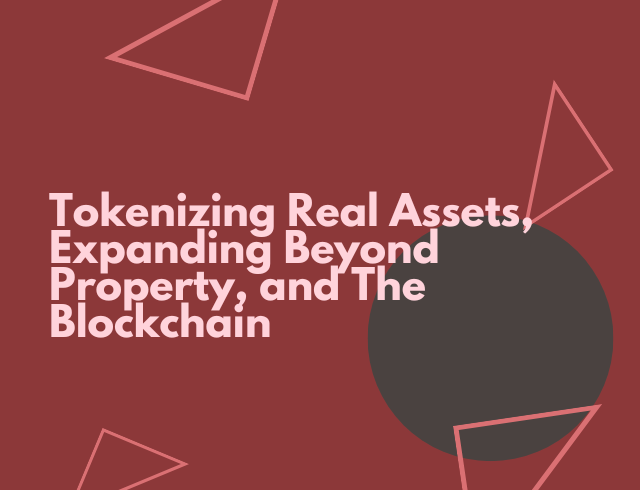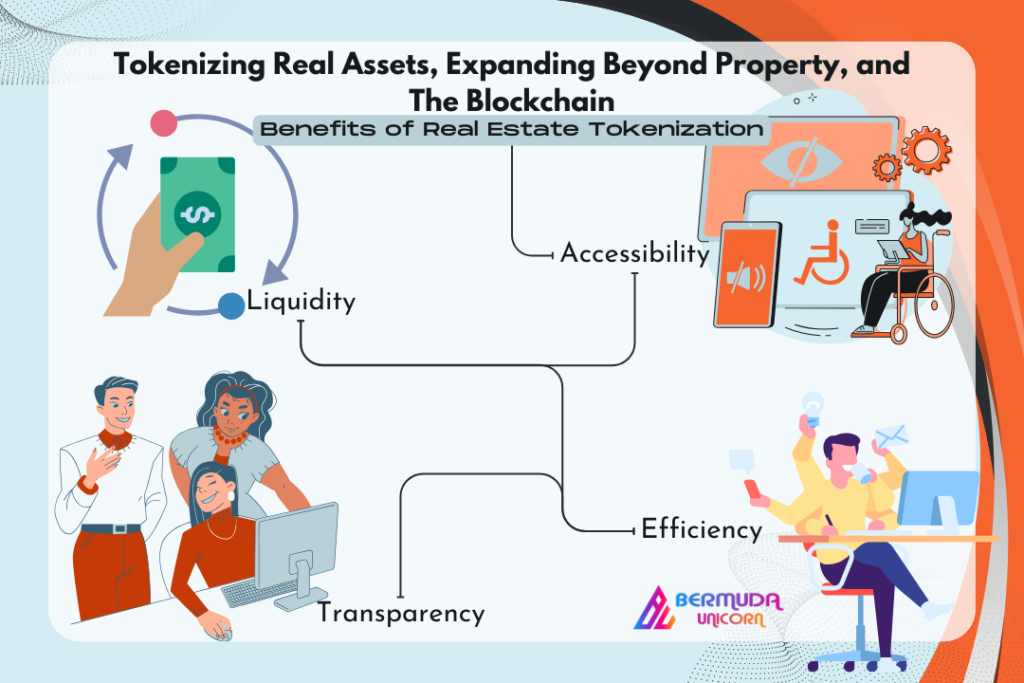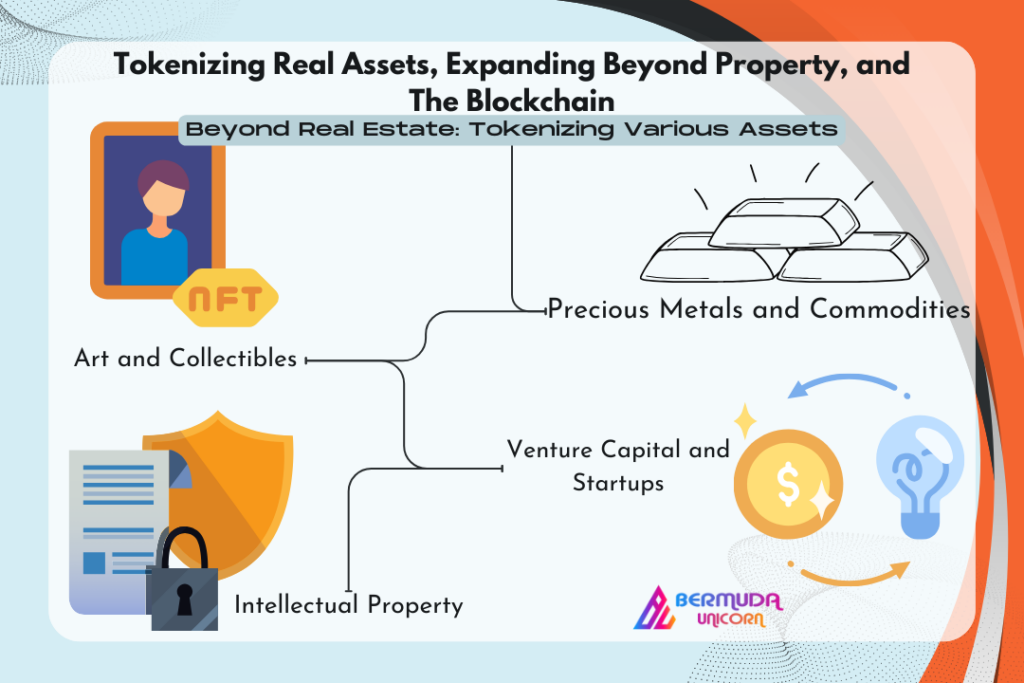![]()

Introduction
In the rapidly evolving landscape of financial technology, blockchain technology has emerged as a transformative force, disrupting traditional industries and creating new avenues for innovation. One of the most promising developments within the blockchain space is the tokenization of real assets, a process that has the potential to revolutionize how we buy, sell, and invest in tangible assets like real estate. In this blog post, we will delve into the concept of tokenization and explore its applications beyond real estate.
Understanding Tokenization
The process of tokenization entails the conversion of asset rights into a digital token on a blockchain platform. This token represents a fraction of ownership or a specific right associated with the underlying asset. In the context of real assets, the most common application is the tokenization of real estate.
Tokenization of Real Estate
Traditionally, investing in real estate has been a complex and often illiquid process. Tokenization addresses these challenges by breaking down the ownership of real estate into digital tokens, making it easier for investors to buy and sell fractional ownership. This not only increases liquidity but also opens up real estate investment opportunities to a broader range of investors who may not have the means to purchase an entire property.
Benefits of Real Estate Tokenization
1. Liquidity: Tokenization transforms real estate assets into liquid and divisible units, allowing investors to trade them easily on blockchain-based platforms.
2. Accessibility: Fractional ownership enables smaller investors to participate in high-value real estate investments that were previously out of reach.

3. Transparency: Blockchain’s inherent transparency provides a clear and immutable record of ownership, reducing fraud and increasing trust in the real estate market.
4. Efficiency: Smart contracts, executed automatically on the blockchain, streamline processes such as property transactions, rent distribution, and more.
Beyond Real Estate: Tokenizing Various Assets
While real estate has been at the forefront of the tokenization movement, the concept extends far beyond properties. Several other tangible and intangible assets can be tokenized, creating new investment opportunities and changing the way we perceive ownership. Here are some examples:
1. Art and Collectibles: Tokenizing artwork and collectibles enables art enthusiasts to own a fraction of valuable pieces, promoting inclusivity in the art market.
2. Precious Metals and Commodities: Tokenization can provide a more accessible way for investors to participate in the ownership of precious metals, commodities, and other physical assets.

3. Intellectual Property: Musicians, writers, and artists can tokenize their intellectual property, allowing fans and investors to share in the revenue generated from their creative works.
4. Venture Capital and Startups: Tokenizing equity in startups facilitates fundraising by providing a more liquid and inclusive market for investors.
Challenges and Future Outlook:
While the tokenization of real assets holds immense promise, there are challenges to address, including regulatory uncertainties, security concerns, and the need for standardization. However, as the technology matures and regulatory frameworks evolve, the future looks bright for the tokenization of real assets.
In conclusion, the tokenization of real assets, particularly real estate, has the potential to reshape traditional financial markets and democratize investment opportunities. As blockchain technology continues to advance, we can expect an increasing number of assets to be tokenized, creating a more inclusive and efficient global financial ecosystem. The journey toward the tokenization of real assets has only just begun, and the possibilities are as vast as the blockchain itself.
Frequently Asked Questions (FAQs) on the Tokenization of Real Assets
1. What is asset tokenization, and how does it apply to real estate?
Asset tokenization involves converting the ownership or rights of an asset into digital tokens on a blockchain. In the context of real estate, this means breaking down property ownership into digital tokens, allowing for fractional ownership and increased liquidity in the market.
2. How does tokenization improve liquidity in real estate?
Tokenization enhances liquidity by transforming real estate assets into divisible and tradable digital tokens. Investors can buy and sell fractions of a property, enabling them to enter or exit investments more easily than dealing with entire properties. This increased liquidity is one of the primary benefits of real estate tokenization.
3. Are there risks associated with investing in tokenized real assets?
Like any investment, tokenized real assets come with risks. Regulatory uncertainties, potential security vulnerabilities, and market volatility are some challenges. Investors should conduct thorough due diligence, be aware of the regulatory landscape, and use secure platforms to mitigate these risks.
4. Can assets other than real estate be tokenized?
Yes, the concept of tokenization extends beyond real estate. Various assets, including art and collectibles, precious metals, commodities, intellectual property, and startup equity, can be tokenized. This allows for more inclusive ownership and trading of a wide range of tangible and intangible assets.
5. How does blockchain technology ensure the transparency and security of tokenized assets?
Blockchain technology ensures transparency and security through its decentralized and immutable nature. Every transaction and ownership record is recorded on the blockchain, providing a transparent and auditable history of asset ownership. Smart contracts, self-executing contracts with the terms directly written into code, automate processes, reducing the risk of fraud and enhancing overall security.
